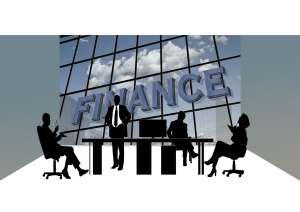Short term trends and indicators are used to predict the future economic growth of a country. The economy of a country goes trough it’s natural cycle of boom and bust periods. An economy can slow down or speed up depending on several factors including investments, foreign policies, trade, and government’s monetary policies. Government and the federal bank keeps money in reserve to control the economy, and they also control the interest rate, so that people are encouraged to borrow and put money back into the market to get it flowing. What are the most important indicators of economy?
Leading economic indicators
Every week, economic data, dozens of economic surveys, and economic indicators are published for the public. Experienced professionals and economists give their opinions and predictions based on this data and they also share it with the public.
These indicators and data have a huge impact on the market  and trends, so it is important to learn how to analyze then and predict the outcome of our economy in the future. Although it’s not an easy task, because people who can successfully analyze this data are experts in this field, it surely can benefit anyone who in an investor or anyone in the market. Some of the current economic indicators are given below.
and trends, so it is important to learn how to analyze then and predict the outcome of our economy in the future. Although it’s not an easy task, because people who can successfully analyze this data are experts in this field, it surely can benefit anyone who in an investor or anyone in the market. Some of the current economic indicators are given below.
The US GDP: Current Statistics
Gross Domestic Product or GDP is updated each month by the Bureau of Economic Analysis (BEA). According to the Economic Report of the President released on the March 2014 by President Barack Obama, the U.S. economy recovered from the recession quicker than every country in the world, except Germany. This report shows the progress made since the recession periods of 2007-2008, which is marked as the worst resection since the Great Depression of the 1930s.
The chart shows that the current US GDP has returned to pre-crisis levels. The currently estimated GDP of the United States is $16.8 trillion, at a growth rate of 4.06%, which is an improvement from -2.1%, part of July 31, 2014 revision. (The BEA’s Q2 GDP: A Deeper Analysis)
The Council of Economic Advisers estimated in the report that the “Recovery Act, at a macroeconomic level, saved or created roughly 6 million job-years, where a job-year is defined as “one full-time job for one year.” (Huffingtonpost.com)
Current unemployment rate
The unemployment rate has shown a significant improvement from the 2008-20010 periods, when unemployment had peaked at 10%. Currently, the unemployment rate is improving and current statistics from the Bureau of Labor shows that the unemployment rate is at 5.9%.
Current inflation rates
 There was hardly any inflation during the month of September 2014, says US Economy Expert Kimberly Amadeo. As prices rose by a mere 0.1%, energy prices continued to fall, offsetting the increase in food, healthcare and housing costs. She also added that “the core inflation rate remained at just 1.7%, well below the Fed’s 2.0% target. “
There was hardly any inflation during the month of September 2014, says US Economy Expert Kimberly Amadeo. As prices rose by a mere 0.1%, energy prices continued to fall, offsetting the increase in food, healthcare and housing costs. She also added that “the core inflation rate remained at just 1.7%, well below the Fed’s 2.0% target. “
Every four to six years, the economy of the United States experiences a slow down. While the months of October, November and December of 2013 showed rapid economic growth and recovery from the recession, consumer spending had increased. However, many of us general consumers feel that it’s probably a little “unnerving” to consider this market to be in economic recovery. “While the markets may be performing well, the average American isn’t.” – Economic Outlook 2014.
People of America are still finding it hard to get out of household debt, and although the unemployment rate is falling, it is still high. The Washington Post has said a similar thing in one of their articles titled A familiar economic trend in America: Spending up, saving down. They said that despite the economic growth and rise in GDP, “Workers’ incomes still aren’t rising very fast — and they’re not rising enough to keep up with the increase in spending.”
 This is a familiar trend n the United States, they said. The trend is of spending more than savings, and in some cases, spending more than income. However, general consumers don’t really seem to care about this; they are feeling optimistic about the falling unemployment rate, rise in market, and optimistic that the economy is shaking off its “slow-growth shackles.”
This is a familiar trend n the United States, they said. The trend is of spending more than savings, and in some cases, spending more than income. However, general consumers don’t really seem to care about this; they are feeling optimistic about the falling unemployment rate, rise in market, and optimistic that the economy is shaking off its “slow-growth shackles.”
The optimistic way of viewing the recent decline in savings and increase in spending could be that people are viewing the current economy as an improvement and that the hard times are finally over. The value of products and services are rising again, which is a sign of a growing economy. All experts would probably agree that a slight inflation is healthy for the economy.
We’ll be posting more information about current economic trends in our future blogs, so please visit our sites regularly, and please add your comments below.
Source: Institute of Ecolonomics



